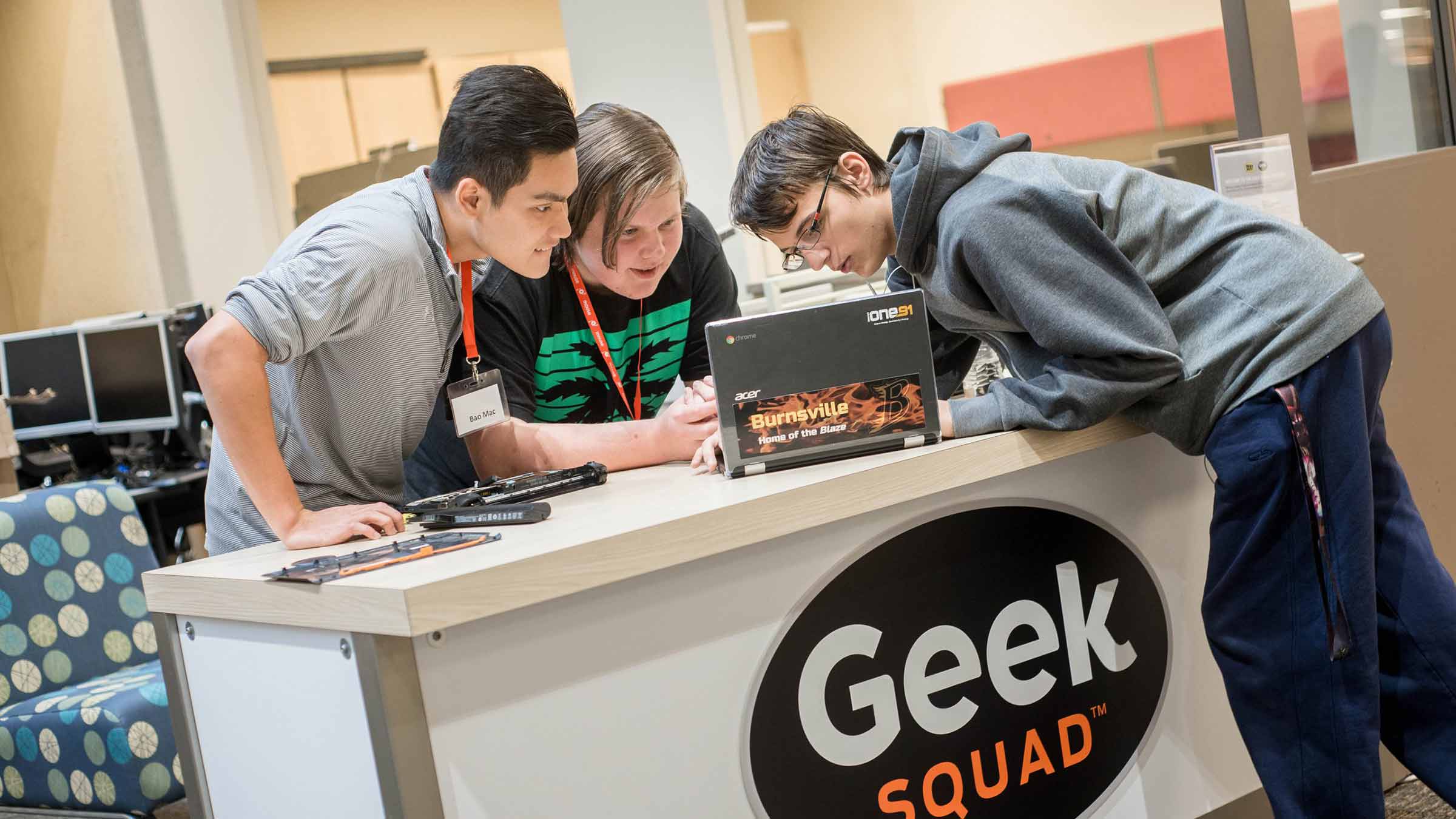
Since 2015, the Career Academies team has worked with leaders across the state to build career pathways and amplify the powerful potential of all students in Minnesota.
This summer, the Career Academies team facilitated a conversation with educational leaders on the need for a bridge between K-12 education, post-secondary and employment systems. This group of decision-makers are keenly focused on ensuring a smooth transition from high school to post-secondary learning.
The refreshing and energizing conversation illuminated a critical opportunity to blur the lines between high school and college – and to break down boundaries that hold inequity in place. Minnesota needs to do better for students, particularly for students of color and students from low-income backgrounds. Our dialogue highlighted bright spots that show it can be done.
Jobs for the Future, a national partner of Career Academies, recently published an argument for the restructuring of education for students by erasing the dividing line between high school, college systems and the labor market – the “Big Blur” – so that all students have clear pathways to employment, economic mobility and advancement. One area where this vision aligns with our Career Academies initiative is in our efforts to provide high school students with access to college credit – also known as “dual enrollment.”
Dual enrollment is widespread and growing, but not all students are able to utilize the opportunity. In 2017, the participation rate of students of color in dual enrollment courses in Minnesota was 15.8 percent, though 31.5 percent of the state’s students are students of color. In comparison, 84 percent of students participating in dual enrollment in 2017 were white, while 68.5 percent of students in the state are white. Similarly, students from low-income households are widely underrepresented in dual enrollment courses.
Earning college credit in high school saves students money, builds confidence, raises graduation rates and increases the likelihood that a student will progress to post-secondary options. In order to drive these positive outcomes for students, it is important for colleges to deepen partnerships with high schools to close equity gaps in access and clear the pathway for high school and college success.
Through our Career Academies initiative, we seek to unite public education and employment systems so that all students in Minnesota have pathways to wealth-building and purpose-driven careers. Dual enrollment is a core component of our Career Academies strategy and a proven method for improving educational outcomes in both high school and college.
Take, for instance, our Career Academies partner District 191 – Burnsville-Eagan-Savage, where students choose a career pathway (such as education or health care) and can earn an associate degree while in high school, setting them on a path to a wealth-building and purpose-driven career.
“The Pathways program at BHS set the tone for my life and really inspired me to work as an educator,” said one Burnsville student. “I have gotten such great support throughout high school and this program really set the course for me to work towards my goals. It got me this job where I get to work with great students, and it allowed me to save thousands of dollars on college courses.”
Additionally, we are seeing growing momentum across the state for new online options to help students participate in college-level coursework – eliminating barriers in transportation, geography and scheduling, all of which can limit these programs’ accessibility for students experiencing poverty and students of color. For example, Online College in the High School offers dual enrollment courses to students from across the state, supporting them as they pursue their desired career pathway. Online dual enrollment offerings can mitigate many of the barriers students face, and can create new opportunities for students statewide.
In partnership with Jobs for the Future, Career Academies recently launched a new initiative to improve the quality of online dual enrollment courses in Minnesota through the integration of social-emotional learning (SEL) practices. Incorporating SEL into these courses means that instructors can teach problem-solving, relationship building, growth mindset, perseverance and self-regulation within a collegiate context – skills that prepare students for success.
These innovative courses are the first of their kind and will serve as a national model for what is possible. When partners and systems across our state are brought together, we create new pathways for students to succeed. This is what it means to build a career pathways movement.